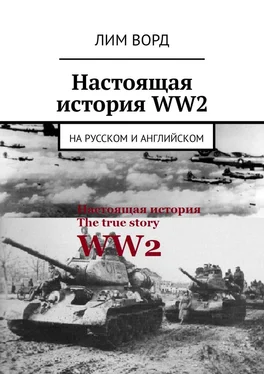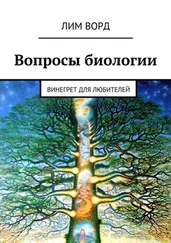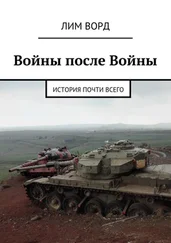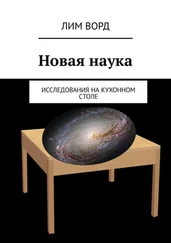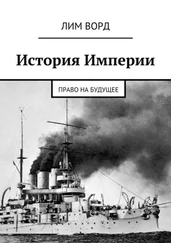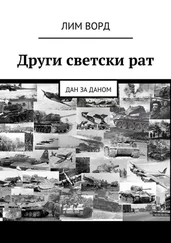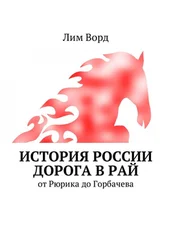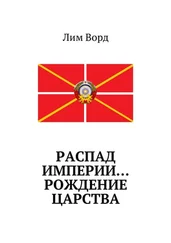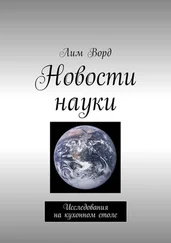Лим Ворд - Настоящая история WW2. На русском и английском
Здесь есть возможность читать онлайн «Лим Ворд - Настоящая история WW2. На русском и английском» — ознакомительный отрывок электронной книги совершенно бесплатно, а после прочтения отрывка купить полную версию. В некоторых случаях можно слушать аудио, скачать через торрент в формате fb2 и присутствует краткое содержание. ISBN: , Жанр: Биографии и Мемуары, Публицистика, История, Политика, на русском языке. Описание произведения, (предисловие) а так же отзывы посетителей доступны на портале библиотеки ЛибКат.
- Название:Настоящая история WW2. На русском и английском
- Автор:
- Жанр:
- Год:неизвестен
- ISBN:9785449312167
- Рейтинг книги:5 / 5. Голосов: 1
-
Избранное:Добавить в избранное
- Отзывы:
-
Ваша оценка:
- 100
- 1
- 2
- 3
- 4
- 5
Настоящая история WW2. На русском и английском: краткое содержание, описание и аннотация
Предлагаем к чтению аннотацию, описание, краткое содержание или предисловие (зависит от того, что написал сам автор книги «Настоящая история WW2. На русском и английском»). Если вы не нашли необходимую информацию о книге — напишите в комментариях, мы постараемся отыскать её.
Настоящая история WW2. На русском и английском — читать онлайн ознакомительный отрывок
Ниже представлен текст книги, разбитый по страницам. Система сохранения места последней прочитанной страницы, позволяет с удобством читать онлайн бесплатно книгу «Настоящая история WW2. На русском и английском», без необходимости каждый раз заново искать на чём Вы остановились. Поставьте закладку, и сможете в любой момент перейти на страницу, на которой закончили чтение.
Интервал:
Закладка:
4. Ha-Guo, Type 95. Japanese light tank. Armament: 37 mm. gun, 75 shells, two 6.5 mm. machine gun. Booking: the forehead, the side of the body 12 mm., The forehead, the side of the tower 12 mm. speed on the highway 45 km. h, cross-country 25 km. h. Cruising range, respectively: 250 and 210 km. Crew of 3 people. Weight 7.5 tons. Specific power 16 hp, ground pressure 0,66 kg. See Manufactured 2300 machines.
5. ANT-40 (SB). High-speed (medium) front-line bomber, development of design bureau of AN Tupolev. Armament: four 7, 62 mm. machine gun ShKAS, 600 kg. bombs. Speed: maximum 450 km. h, cruising 375 km. h. The range is 2300 km. The crew is three people. Due to a fairly successful design, it was manufactured under license in pre-war Czechoslovakia: after annexation, all aircraft were placed at the disposal of the Reich and its satellites. Operated since 1936 in Spain, the Republican troops, where it was called «Katyusha» and (at the disposal of the francists) «Sofia», also in the Khalkin-Gol, in the Winter, Great Patriotic War.
Most of the Security Council was destroyed in the first weeks of the Great Patriotic War; In addition, the lack of armor protection for the crew and vital units, and the lack of training of the flight crew, were reflected. Further, the ANT-40 was used as night bombers, to transport saboteurs to the rear of the enemy, as well as various kinds of cargo; ammunition, food, mail, etc. 6656 units were produced.
6. TB-3 (ANT-6). Soviet heavy bomber. Armament: from 4 to 8 7.62 mm. Degtyarev’s machine guns, the bomb load – normal 2000 kg of bombs, the maximum – 5000 kg. The speed of the land is 200 km. h, at an altitude of 180 km. h. The chassis are not retracted. The flight range is 3100 kilometers. The crew of 6—8 people. Successfully applied in the battles on Khalkin Gol, for their intended purpose, day and night, with the Soviet air force in the air, also for the evacuation of the wounded (15—20 people aboard), the delivery of goods. In the Winter War proved to be mediocre. It made up 25% of the Bomb Air Force by June 22, 1941, was based deep in the rear, so it almost did not suffer from Luftwaffe attacks. When daytime bombing targets carried heavy losses, but as a night bomber proved to be the best side. The Red Army was used up to the Battle of the Kursk Bulge. From 1932 to 1938, 818 vehicles were produced, completely ANT-6 was decommissioned in 1946.
7. One of the characteristic persons of the Stalin era – border guard Nikita Fedorovich Karatsupa, Hero of the Soviet Union. Birth – the village of Alekseevka, Zaporozhye region, Ukraine. Detained 338 violators of the state border. Personally, he destroyed «129 spies and saboteurs who did not lay down their arms.» In essence, this «right man» is a maniac killer of hundreds of unarmed Russian peasants who fled the Soviet regime and the GULAG abroad, possibly trying to explain the essence of their situation to the military detainee, but not receiving any response other than smirking or bullets.
Armed conflict between Japan and the USSR in Halkin Gol
In the Japanese version, with Russian transcription, it sounds like «Nomon-khan jiken» – «The incident with Nomon Khan,» by the name of one of the local heights. Some historians consider fights at the river Halkin-Gol the Second Russian-Japanese war.
Since the twenties of last century Mongolia is a protectorate of the USSR and, nominally – a socialist country. Attacks on it are already considered a matter of the Soviet Union. Therefore, when in May 1939 militaristic Japan, unhappy with the demarcation of the border with the Mongolian People’s Republic, attacks Mongolian outposts near Lake Khasan, according to the Protocol on Mutual Assistance of March 12, 1936, the Red Army interferes.
Ground-based battles along the river Halkin Gol, considered by the Japanese as the «right» border with their puppet state on the territory of China («above» Korea and more than three times), are conducted with varying success. The main events unfold in the air. Since May 22, for two days the Soviet fighter regiment is losing 22 I-15s, the Japanese – one. On an urgent basis, the pilots who showed up in Spain, as well as the newest I-16 and Chaika fighters, are called to the place of the conflict. From June 22 to June 28, the Japanese Air Force lost 90 aircraft, the Soviet Air Force lost 38 aircraft.
Since July 2, the Japanese ground group is moving into a large-scale offensive near Mount Bayan-Tsagan. In the battles participate up to 400 tanks and 300 aircraft from both sides at a time. Soviet troops quickly commanded by G. Zhukov. He manages to rectify the situation, although L. Beria sends the 1st rank commissioner L. Mehlis (a serial killer of the higher officers of the Red Army) to «check» the commander of the group of troops. The army commander’s psyche is stronger.
The Japanese side is losing 9,000 killed, almost all tanks and most of the artillery.
At the end of July, the intensity of military operations on the ground is declining. Again, fighting is in the air. Japan loses 67 aircraft, the USSR – 20. This is a prelude to a decisive blow by Soviet and Mongolian troops on August 20. The forces of the parties: the USSR-Mongolia – 30 thousand people, 500 tanks, 580 aircraft. Japan – 20 thousand fighters, 120 tanks, 450 aircraft. The army of the country of the Rising Sun is surrounded, crushed and destroyed. The day of the truce, on September 15, is crowned with an impressive air battle – 207 Soviet aircraft against 120 Japanese. Finally, «de jure», the conflict ends in May 1942; the parties find a compromise on the basis of some geographic map found in the archives.
Losses of the parties: the USSR – irretrievable losses of 10 thousand people, 250 tanks, 210 aircraft. Japan and the Union of Manchukuo, according to the averaged data – 36 thousand people, 300 tanks, 400 aircraft.
The Soviet-Finnish War of 1939—1940
Ideas of Great Finland, uniting the peoples of the Finnish-Ugric group; Finns, Karelians, Estonians, from the Gulf of Bothnia to the Ural Mountains, are spreading with the separation of Finland proper from Russia in 1918. The Government of Suomi sends a petition to the warring Germany; conclude a Brest peace with the condition of joining Finland (an ally of the Austro-German Empire), East Karelia.
In the course of their own civil war, on April 29, 1918, the White Finns capture Vyborg, arrange the genocide of all people who do not speak Finnish (retired military, schoolboys in Russian uniforms, even Poles). Three thousand people die.
On May 15, 1918, the Finnish government declared war on Soviet Russia. Its troops occupy, in particular, the Russian, from the 16th century, Pechenga, rename the name of this village in «Petsamo». Later, large deposits of nickel ore will be explored here, since 1935 their industrial development by Anglo-American corporations will begin.
The Finnish military partially block Petrograd, contributing to the first great famine in this city (according to averaged data, one hundred thousand people become victims of it, as well as «red» terror). At the rate of Mannerheim, a plan for «national uprisings» is being developed, Finnish instructors are being allocated to create centers of insurgency. However, the plans of the Field Marshal to conquer East Karelia, the Kola Peninsula, the offensive against Petrograd, Germany does not support. After the Vyborg tragedy, any joint operations to overthrow the Bolshevik government along with the Finns, the White Army refuses to conduct either.
By May 1920, parts of the Red Army were eliminating the puppet North-Karelian state. In October of the same year, Finland and the USSR signed the Tartous Peace Treaty, according to which Russia was losing part of its territories. However, in 1921 Helsinki unleashed the second Soviet-Finnish war, by forces of «forest partisans» committing acts of sabotage and killing of supporters of Soviet power. The fighting ends in March 1922, a document is signed to ensure the inviolability of the Soviet-Finnish border. About 30,000 people dissatisfied with the new order go to Finland and, up to the end of the 1920s, armed groups formed from them, make raids on Soviet territory.
Читать дальшеИнтервал:
Закладка:
Похожие книги на «Настоящая история WW2. На русском и английском»
Представляем Вашему вниманию похожие книги на «Настоящая история WW2. На русском и английском» списком для выбора. Мы отобрали схожую по названию и смыслу литературу в надежде предоставить читателям больше вариантов отыскать новые, интересные, ещё непрочитанные произведения.
Обсуждение, отзывы о книге «Настоящая история WW2. На русском и английском» и просто собственные мнения читателей. Оставьте ваши комментарии, напишите, что Вы думаете о произведении, его смысле или главных героях. Укажите что конкретно понравилось, а что нет, и почему Вы так считаете.
